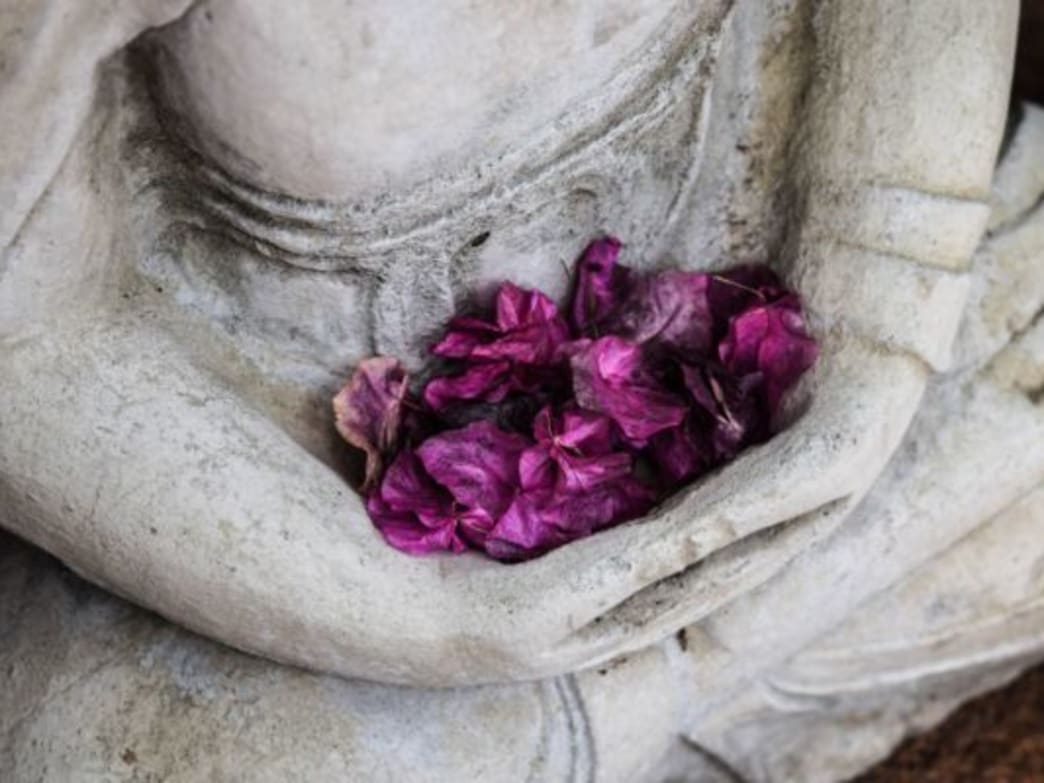5 Tips to Help You Meditate
I feel edgy. And unsettled. And a bit anxious. Between the bomb violence in Austin (my hometown), the current political climate, the wonderful but emotional March for our Lives rallies and my always-pushing-the-boundaries teen, I’m not feeling too grounded. So rather than slide into my typical MO of over-doing or trying to solve my issues and the world’s–I’m stopping in my tracks this morning and embracing Sylvia Boorstein’s advice: “Don’t just do something, sit there.”
Besides joyful movement (Nia dance, yoga, walking with friends and hikes in nature), the daily ritual that most helps me quiet my mind, release stress and lessen my need to control my circumstances, is meditation.
For years I fought this idea of a morning ritual, of creating dedicated time every day to steep in stillness before entering the world. I had read the research on meditation, but I rationalized: “It’s too hard when you’re a parent. I’m too busy. I’ll do it later in the day. I would, but my husband won’t join me. I don’t have the right space. I need a new meditation cushion.” And so on. I worked hard to justify my reluctance, always wondering, “Does it really make a difference?” Today, it seems crazy that I needlessly postponed what I now consider the single most important part of my day.
Marianne Williamson, the internationally known modern mystic and bestselling author of A Return to Love, once said that devoting as little as five minutes every morning to your inner life can set a positive course for your entire day. As I had battled for years trying to commit to a daily twenty-minute meditation practice, this wisdom really spoke to me. Being grateful every morning for five minutes? I could do that. Here are five tips that may help you jump-start a meditation practice:
Schedule meditation for the same time each day.
It works best to meditate early in the morning, since this is often when the house is the most quiet; the morning is also when our minds are most quiet and clear. If you’re not an early-morning person, do it later in the day: take a mid-morning nature break while at work, or wait until after the kids have gone to bed.
Identify where you’ll pause for your practice.
Find or create a space in your home that elicits peace, healing and self- nurturance. Know that you can go there at any time, and use this as a regular meditation place. Maybe it’s a special reading chair, a creativity altar, or a spot in the backyard under your favorite tree. Or, if setting aside a certain spot isn’t feasible, simply close your office or bedroom door to create a temporary “space.” Identify a quiet parking lot or a nearby green space where you can park alone during your morning commute. Get creative!
Tap a source of comfort and inspiration.
To focus their intention and set the tone for the day, many like to read and meditate on an inspirational text or phrase. This could be from a spiritual teaching, the Bible, a favorite book or poem or even an inspirational card deck.
Remember to breathe.
Sometimes when we meditate, our agitation and anxieties fill our heads with thoughts and to-do lists. When this happens, don’t forget to breathe! Breathing detoxifies, energizes, changes our mood and biochemistry, wakes up the brain, and helps us feel more present and calm. One technique I use when I meditate, is to breathe in very slowly for a count of three, hold for three, and exhale for three — all through the nose with the mouth closed. Keeping your eyes closed while doing this also helps focus your awareness inward. You might also choose a word or mantra to help you stay focused on your breathing.
Ritualize your morning meditation time.
Establish a simple ritual or routine for your morning meditation, which provides a rhythm and structure. For example, you might first light a candle, close your eyes, and rest in stillness. If you like, you could then read a short inspirational text, and close by reflecting on what you’re grateful for or setting an intention for the day. You might ask for guidance on an issue or help releasing feelings that have been bothering you. Choose a rhythm and flow that works for you. (More tips and guidance on daily meditations practices in my new book Nurturing the Soul of Your Family.)
Above all, release “shoulds” or “have tos.” There is no right or wrong way to do this. Keep it simple, maintain a sense of humor, and — above all — make it personally meaningful. Bhavani, a wonderful meditation teacher I know at Kripalu, says, “How do you know when you’ve had a successful meditation? It’s over.” Don’t worry about the results. Just creating the space for stillness and accepting whatever unfolds is enough. Every time you come to your cushion will be different. Allow yourself to experience what it’s like to be fully present and comfortable sitting in silence. And be easy on yourself. If this is new, even just starting with five minutes of quiet before you begin your day is huge!
Lastly, give this time. You may not experience immediate or consistent results, but you still receive tremendous benefit from regular practice. Even on the days when my thoughts are ricocheting around like exploding popcorn, I still feel better after I meditate than I did before. A spiritual mentor once said to me, “Want to experience a little bit of peace? Meditate once a week. Want to experience a lot of peace? Meditate every day.” For a growing number of us, meditation is the secret weapon for maintaining our sanity!
Written by Renee Peterson Trudeau for Working Mother and legally licensed through the Matcha publisher network. Please direct all licensing questions to legal@getmatcha.com.

